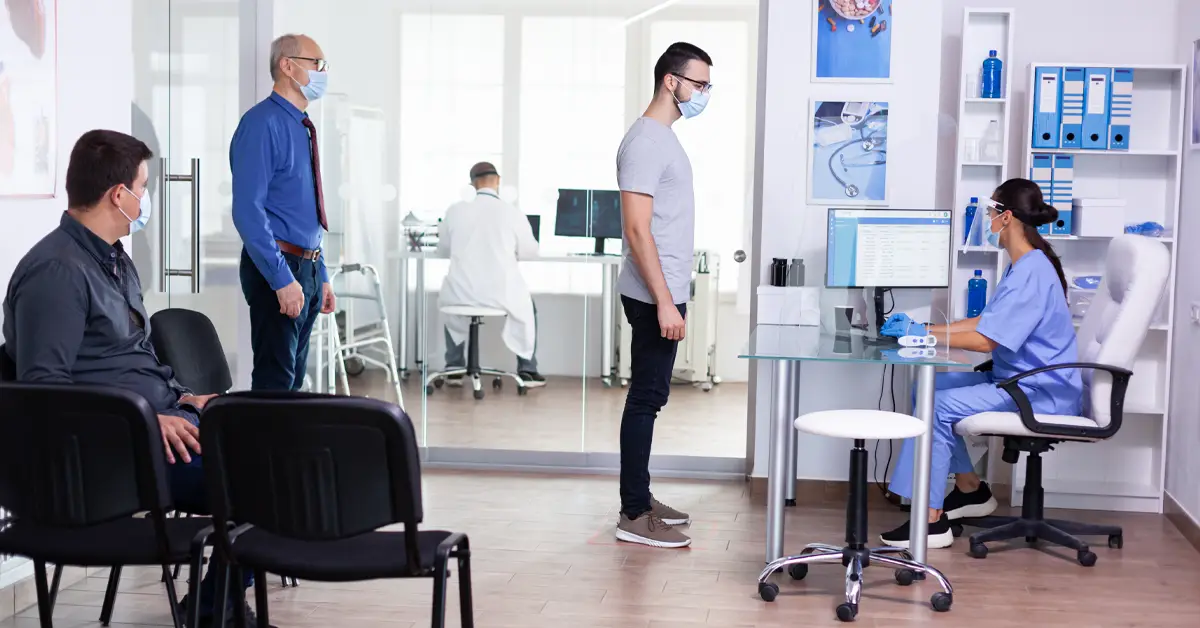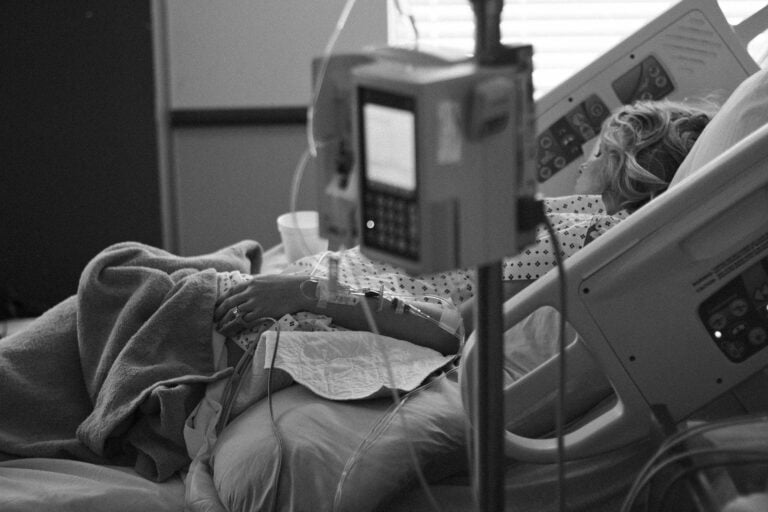Observing “Patient Safety Awareness Week” presents a unique opportunity to amplify global awareness regarding the critical significance of patient safety, particularly within healthcare systems where preventable harm remains a pervasive issue. According to the World Health Organization, an alarming 2.6 million deaths occur worldwide each year due to unsafe care, impacting both developed and developing nations alike.
Shockingly, hospitals worldwide report approximately 134 million adverse events annually, underscoring the urgent imperative to bolster patient safety measures. The emergence of remote patient monitoring (RPM) heralds a promising avenue for addressing the challenges of unsafe care in hospitals and elevating patient safety standards on a global scale.
By leveraging RPM technologies, healthcare providers can remotely monitor patient health parameters in real-time, facilitating early detection of potential issues and proactive intervention to mitigate risks and enhance patient safety outcomes.
Understanding Patient Safety Awareness
Importance of patient safety awareness in health care systems
Patient safety awareness is a crucial aspect of the health care system, as it emphasizes the importance of prioritizing the safety of patients. It involves actively engaging patients in their healthcare process and creating awareness about the potential risks and safety concerns involved.
Lack of patient safety awareness can lead to medical errors, injuries, and infections. Studies suggest that as many as 400,000 deaths occur in the United States each year because of errors or preventable harm. This danger emphasizes the need to improve the quality and safety of healthcare, making it a top priority for healthcare professionals.
Improving quality and safety through patient safety awareness
In addition to mitigating the risks of medical errors, patient safety awareness can also lead to quality improvement in health care systems. It helps to build a culture of safety and encourages communication and trust between patients and healthcare professionals. Patients who are aware of their healthcare process can better communicate their concerns and needs to their caregiver, resulting in improved quality of care.
Creating awareness about the importance of safe healthcare practices and actively involving patients in their healthcare process can go a long way in reducing the risk of medical errors and improving patient outcomes. It is therefore important for healthcare professionals to prioritize patient safety awareness and make it an integral part of their health care system.
What is Patient Safety Awareness Week?
Patient Safety Awareness Week is a yearly celebration with the aim of raising awareness and advancing patient safety practices. This event, which is currently scheduled on March 12 – 18, 2023, provides an opportunity for patients to become more involved in their healthcare while also encouraging healthcare providers to focus on preventing avoidable harm to patients.
Through education, training, and resources, Patient Safety Awareness Week has been instrumental in helping healthcare providers improve patient safety. By promoting the importance of patient safety, this event seeks to improve the adoption of best practices and strategies for preventing preventable harm.
Global Initiatives for Patient Safety
Patient safety is a global concern, prompting various initiatives and campaigns aimed at improving safety standards and reducing medical errors worldwide. These initiatives involve collaboration between governments, healthcare organizations, professional associations, and patient advocacy groups to address systemic issues and implement strategies for enhancing patient safety on a global scale.
- World Health Organization (WHO) initiatives: The WHO spearheads numerous initiatives to promote patient safety, including the World Alliance for Patient Safety and the Global Patient Safety Challenge campaigns. These initiatives focus on raising awareness, developing guidelines, and implementing best practices to reduce healthcare-associated infections, medication errors, and other preventable harm.
- Patient safety collaboratives: Many countries have established patient safety collaboratives, bringing together healthcare stakeholders to share best practices, implement quality improvement initiatives, and collaborate on research projects aimed at enhancing patient safety.
- National patient safety strategies: Governments worldwide have developed national patient safety strategies to prioritize patient safety within healthcare systems. These strategies often include goals and action plans to address key patient safety issues, improve reporting and learning from adverse events, and promote a culture of safety among healthcare professionals.
- Global patient safety summits: International forums and summits on patient safety provide opportunities for stakeholders from different countries to exchange ideas, share experiences, and collaborate on initiatives to improve patient safety. These events facilitate networking and knowledge-sharing to advance patient safety on a global scale.
- Patient advocacy and engagement: Patient advocacy organizations play a crucial role in promoting patient safety by raising awareness, empowering patients to speak up about safety concerns, and advocating for policies and practices that prioritize patient safety.

Ensuring Patient Safety with DrKumo Remote Patient Monitoring Technology Solutions
DrKumo offers a state-of-the-art RPM technology that offers highly scalable, continuous, and real-time monitoring solutions. It is HIPAA compliant, ensuring patient data privacy and security, and is mobile-enabled, allowing patients to manage their health conditions from the comfort of their homes.
The user-friendly interface of DrKumo RPM helps patients and care providers gain real-time data, insights, and alerts, which can lead to timely intervention and improved care. The innovative, collaborative, and technology-driven culture of DrKumo has revolutionized health care, providing effective solutions for both patients and health care professionals. Overall, DrKumo RPM is a valuable tool that enhances patient safety awareness and supports better health outcomes.
Frequently Asked Questions
What are the key elements of patient safety awareness?
- Patient safety awareness involves knowledge and behaviors that promote safety and reduce the risk of harm to patients.
- Key elements of patient safety awareness include effective communication, teamwork, error reporting, patient-centered care, and adherence to safety protocols.
How can patients participate in Patient Safety Awareness Week?
- Patients can participate in Patient Safety Awareness Week by learning about the importance of patient safety, sharing their experiences, and advocating for safer healthcare practices.
- They can also engage with care providers, ask questions, and be an active participant in their care.
What are some of the most common patient safety issues?
- Common patient safety issues include medication errors, falls, hospital-acquired infections, misdiagnosis, and surgical errors.
- These issues can be prevented or minimized by promoting patient safety awareness, implementing safety protocols, and fostering a culture of safety in healthcare settings.
What is the role of healthcare providers in promoting patient safety awareness?
- Care professionals play a crucial role in promoting patient safety awareness by adhering to safety protocols, communicating effectively with patients and their families, and reporting errors and near-misses.
- They can also educate patients about their rights and responsibilities, encourage patient engagement in their care, and implement evidence-based practices to reduce the risk of harm.
How can DrKumo Remote Patient Monitoring help patients receive better quality healthcare?
DrKumo RPM solutions can greatly contribute to advancing safe healthcare and improving the health system by providing various benefits for both patients and healthcare providers. These benefits include:
- Enabling patients to manage their health conditions at home and providing real-time intelligence to healthcare providers can enhance health care safety by facilitating timely interventions.
- Improving care for patients by promoting patient engagement in their care and facilitating early detection of health issues, reducing hospital readmissions.
- Supporting safe care by being available for patient safety and ensuring HIPAA compliance.
- Enhancing the well-being of patients by providing continuous, real-time monitoring.
- Evolving safe healthcare by making remote care available and providing effective solutions for both patients and health care professionals.
How can patients ensure their safety during medical appointments or hospital stays?
Patients can take several steps to ensure their safety during medical appointments or hospital stays, including:
- Asking questions and seeking clarification about their diagnosis, treatment plan, and medications.
- Bringing a list of current medications, allergies, and medical history to appointments.
- Being actively involved in decision-making regarding their care and treatment options.
- Requesting explanations about any unfamiliar procedures or tests before they are performed.
- Speaking up if they notice any concerns or inconsistencies in their care.
Takeaways
Improving awareness of patient safety in healthcare settings is crucial to prevent medical harm, which is a leading cause of death worldwide. Remote patient monitoring plays a vital role by providing real-time data and insights to patients and health care providers, enabling timely intervention and actions to improve patient safety. By utilizing DrKumo RPM technology solutions, care professionals can enhance patient safety, preventing harm in health care settings, and ultimately save more lives.
Take a proactive step towards improving patient safety in healthcare settings by embracing remote patient monitoring technology. Contact us today!
Disclaimer: The information in this article on patient safety awareness is for general informational purposes only. It does not constitute medical advice. Readers should consult healthcare professionals for specific guidance. The author and publisher are not liable for any actions taken based on this information.








